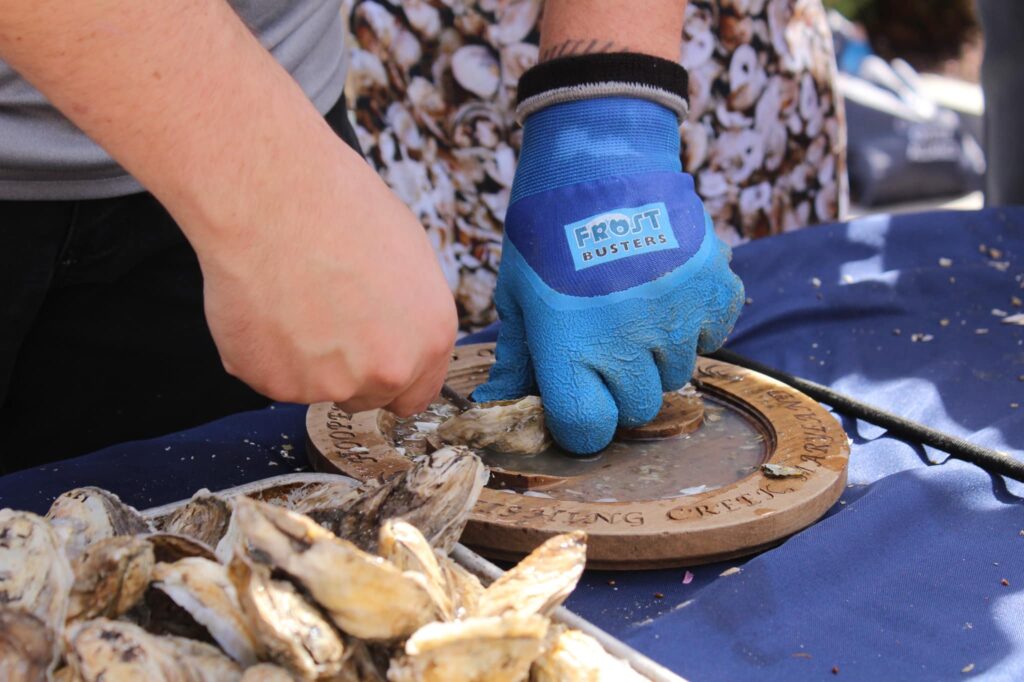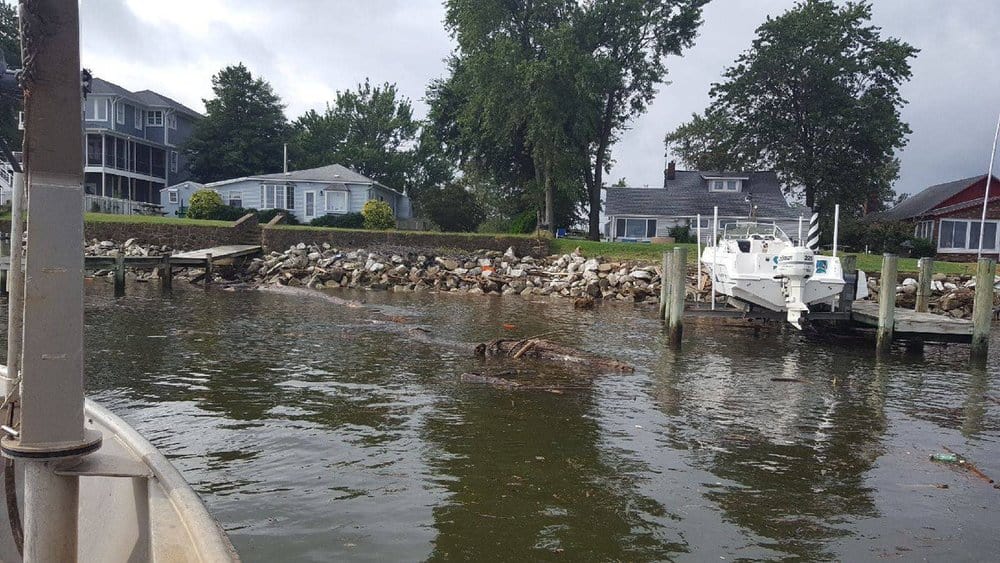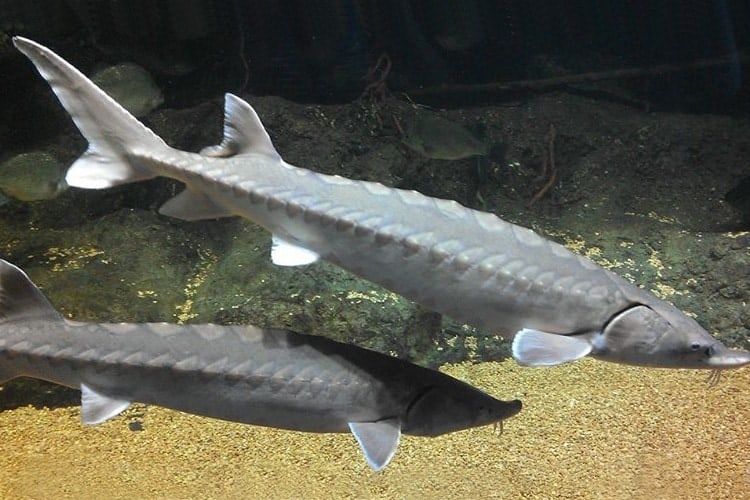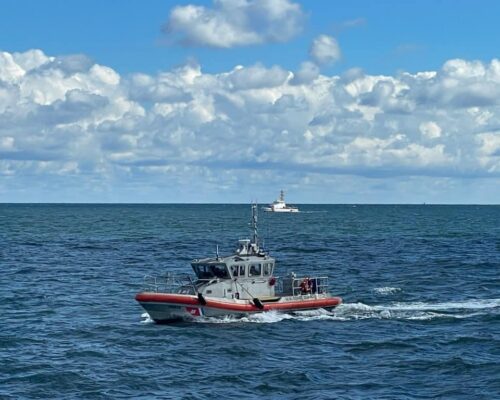It’s nothing new to see special interest groups holding Lobby Days on Lawyers Mall in Annapolis during the state legislative session. But a lobby group serving freshly shucked oysters? That’s something new.
Who was behind the first ever Oyster Pop Up outside the State House? The Chesapeake Oyster Alliance (COA), a group of individuals, restaurants, and businesses that share a common goal of protecting and growing the oyster populations of the Chesapeake.
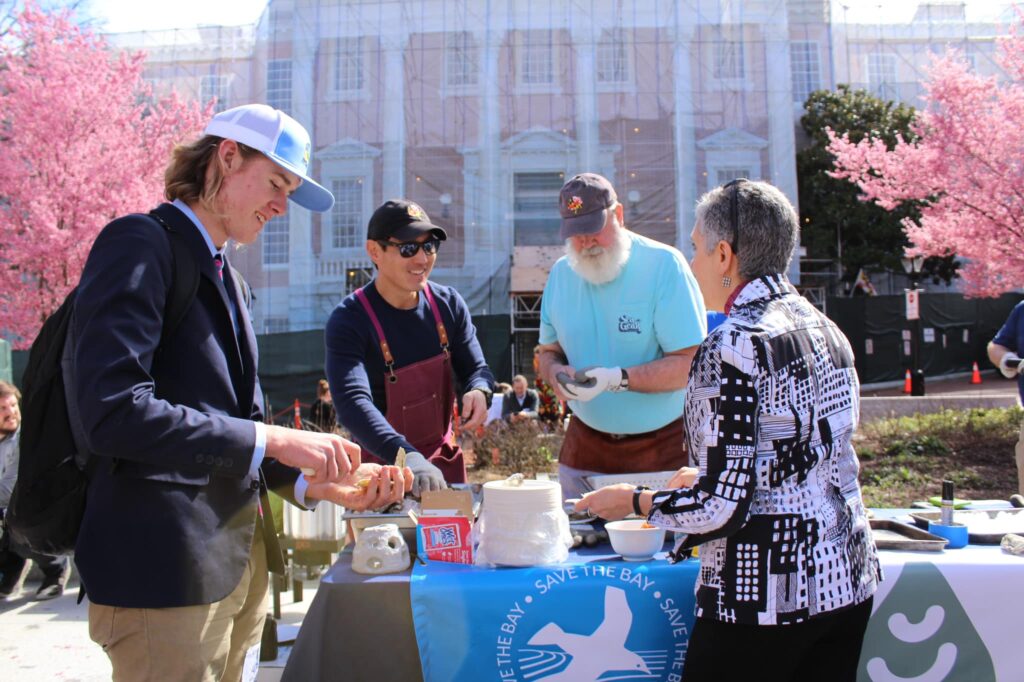
When the Chesapeake Bay Watershed Agreement was signed in 2014, goals were set to restore the Bay watershed. Because the oyster is a keystone species in the Bay, it’s closely tied to the goals for land conservation, environmental education, and habitat protection included in the Watershed Agreement.
Understanding the importance of the oyster, some folks decided to get together and form one united force to back this small but mighty shellfish. That’s the Chesapeake Oyster Alliance, which has made it their mission to add 10 billion oysters to the Chesapeake Bay by 2025. As of this month, they have planted 6 billion oysters. The watershed agreement also set the goal of restoring native oyster habitat and populations in 10 tributaries. The Oyster Alliance is on track to complete this restoration by their 2025 goal.
Oyster restoration is difficult because not all areas of the Bay are suitable for a reef. Poor water quality, water salinity, and nutrient levels all factor in. There is often a depth requirement when planting a foreign object in order to prevent any navigational hazards for unsuspecting mariners.
Once a proper restoration site has been chosen, actually planting the oysters becomes the challenge. In order to grow past the larval stage, oyster larvae must find a hard substrate on which to adhere. This substrate is most commonly oyster shell or a concrete Reef Ball, but oysters have been found growing on debris that sits on the bottom. Some areas have plenty of substrate but lack oyster larvae, some have plenty of larvae but lack substrate, and some lack both. Depending on the status of the area, different methods can be used to grow an oyster reef.
Of course, establishing a viable oyster reef takes a considerable amount of time, money, and work.
The Chesapeake Oyster Alliance must depend on political measures to safeguard the fishery. Each year, members of the Alliance rally at the State Capitols in Annapolis and Richmond to lobby for laws that will protect oysters and speak against laws that will diminish resources. This March, the Oyster Alliance brought the bivalves to Lawyers Mall, outside the State House. Oyster farmers shucked raw oysters for representatives, and talked with them about legislation regarding oysters. Oyster farms including Annapolis Oyster Co., Orchard Point Oysters, and Fallen Pine Oyster Co. were there with bushels of oysters ready to be shared with lawmakers.
Oyster education is also a vital step in restoration. Groups like Coastal Conservation Association (CCA) Maryland run reef ball building programs where they build reef balls with elementary school children. The Marylanders Grow Oysters Program promotes homeowner and community engagement in growing “spat on shell” (baby oysters on recycled shells). Oyster shuckers share the history and importance of oysters on the Bay while shucking private events. People who get to know a little about oysters are more likely to care about their fate.
Oysters are a vital part of the Chesapeake ecosystem. The greatest strength of the Chesapeake Oyster Alliance is the diverse group of people and professions it unites. Watermen, lawyers, restaurants, school groups, conservationists, and business owners join forces to provide a powerful voice. Constituents from disparate backgrounds united around an issue present a compelling argument to legislators (and the fresh oyster meal doesn’t hurt, either). Working towards the common goal of a healthy Chesapeake Bay, adding 10 billion oysters is a good start.

